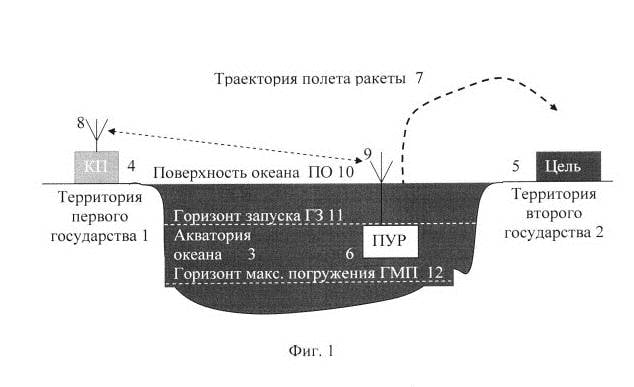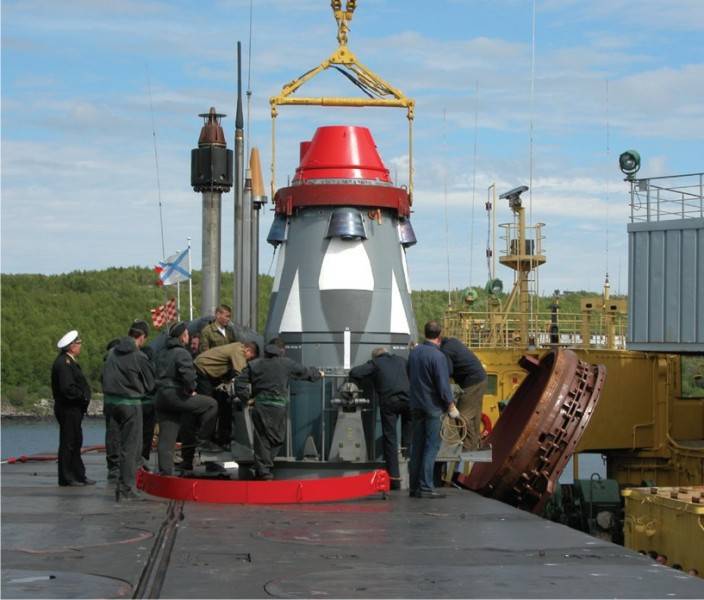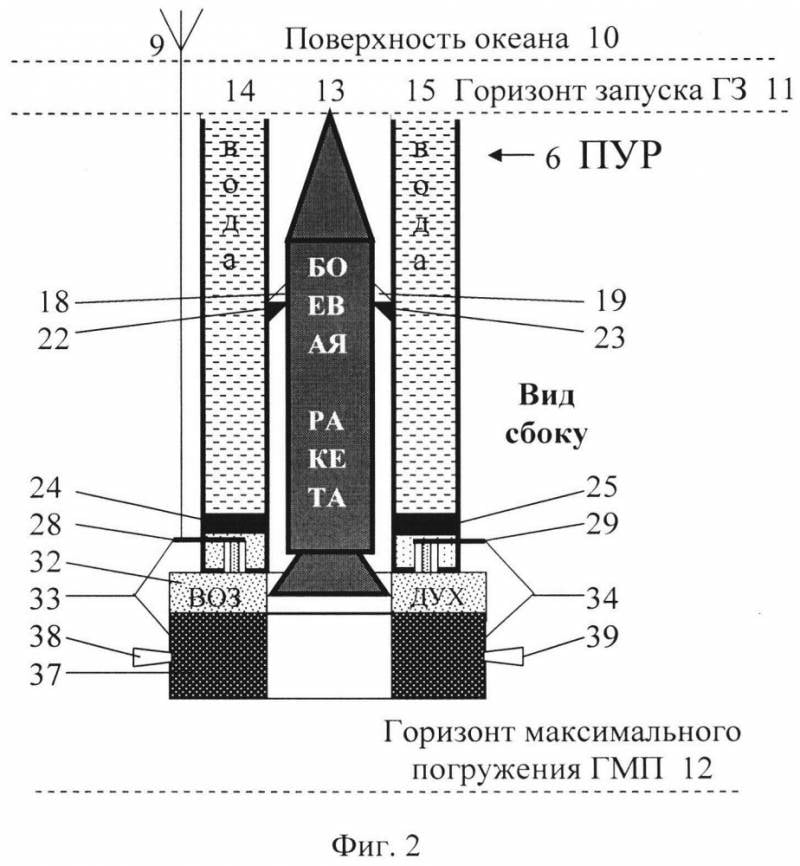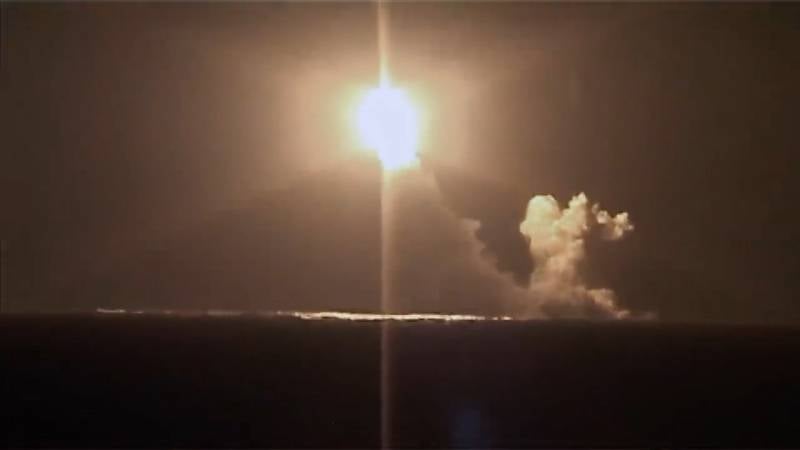Start from under the water. New concept of submarine ballistic missile launcher
A number of methods of basing and deploying ballistic missiles are known. Some of them have been successfully brought to mass exploitation, while others have not been able to move beyond proposals and preliminary projects. In particular, the idea of a stationary underwater complex underwater basing has not received much development. However, it still attracts the attention of inventors - and new similar projects appear. Another patent for this design was issued a few weeks ago.
New development
The original design of the submarine launcher is secured by the patent RU 2748503 "Method for controlling the flight of a combat missile", issued at the end of May. Its author is Yuri Iosifovich Polevoy, an employee of the Samara Transport University. He already holds more than 200 patents for various inventions, incl. in the field of small arms and missiles.
The patent proposes an unusual way of placing a combat missile, which has several advantages over those known and used. The author of the project promises to reduce the cost of manufacturing the launcher; it also achieves the removal of the launch lines to a minimum distance from potential targets, which reduces the flight time. In addition, the claimed ability to provide camouflage and high stability of the complex.
Along with the unusual launcher, a new launch and flight technique is proposed. These measures should ensure a breakthrough of the enemy's anti-missile defenses, designed to intercept "conventional" ballistic targets.
Original design
An unusual submarine launcher (the patent uses the name of a missile launcher - PUR) is made in the form of a fully autonomous complex that has all the necessary systems and means to enter a given area, be on duty and launch a rocket.

Principles of deployment of RPS, graphics from the patent
The basis of such a PUR is a ring starting table with the necessary units inside. It contains the control systems, propulsion system, etc. On top of the table are four cylinders that act as ballast tanks. A place for a rocket is provided in the center. Also, the PUR should be equipped with a radio station for receiving target designations and launch commands.
The inventor proposes an original ballast system that ensures the presence of the PUR under water and ascent to the working depth. Instead of traditional ballast tanks, the use of several vertical cylinders is envisaged inside the hull. The upper end of such a unit is made open, and inside it there is a movable piston. The movement of the piston is provided by the supply of compressed air to the closed part of the cylinder. Accordingly, a constant access of seawater is provided to the open volume.
In order to camouflage and increase stability, the PUR communication complex is equipped with a removable pop-up antenna. It should rise to the surface during communication sessions according to the established schedule. It is also possible to operate on a call from the command post. In all cases, a secure radio channel must be used.
For use as part of the new complex, a quasi-ballistic missile capable of "deceiving" enemy missile defense is recommended. In the initial phase of the flight, it should be directed to a false target, misleading the defense system. Then there is a retargeting and a corresponding change in trajectory.
Work principles
Polevoy's PUR designs are proposed to be secretly placed in the optimal area. The position of the complex should be at a minimum distance from the enemy's territory in a place protected from enemy surveillance equipment. It is proposed to be on duty at depths from 100 to 300 m. During regular communication sessions, the autonomous complex must receive the necessary information and orders.

Loading the R-29RMU2.1 rocket onto a standard carrier - a submarine. Photo GRTs im. Makeeva
Upon receipt of the command to launch, the PUR should ascend to the specified depth. This process is carried out by filling the closed volume of the ballast cylinders with compressed air; In this case, the movable piston must displace water from the open part. After ascent to a depth of 100 m or less, the unit can launch a rocket.
The missile's flight to the target is carried out along a programmed trajectory with correction using satellite navigation. It also provides for a breakthrough of the enemy's defense due to maneuver and departure from a predictable trajectory. The PUR, having completed the launch, returns to the depth.
Advantages and disadvantages
It should be recalled that in the past, in our country and abroad, different versions of an autonomous submarine / pop-up launcher for ballistic missiles have been repeatedly proposed. However, such projects have found application only in the field of development work: submersible stands are used to test new missiles. But the rocket is on alert only with a carrier submarine.
The concept of the launcher from the patent RU 2748503, as well as a number of other similar developments, has both advantages and disadvantages. At the same time, the latter can be fatal and neutralize all strengths. As a result, one should not expect that Yu. Polevoy's invention will be of interest to naval design bureaus or the navy.
The main advantage of the patented PUR is the relative simplicity and low cost of the design. Such an installation is more compact and lighter than a missile submarine. In addition, stationary accommodation and the absence of a crew should greatly simplify operation. At the same time, the PUR of the proposed appearance carries only one missile, and a whole set of such products is needed to fully replace the submarine. Their installation in positions is also not simple. As a result, the economic benefit becomes questionable.
The fighting qualities of a strategic missile submarine are determined mainly by its stealth and mobility. Detecting and neutralizing such a target is a very difficult task for the enemy's defense. In this context, SDI has several disadvantages. First of all, it needs to find a safe area near the enemy's territory, which in itself turns out to be a difficult task. In addition, a fixed installation will turn out to be a fairly easy target for the enemy's anti-submarine defense - its identification at the stage of deployment or during duty is only a matter of time.
Finally, the appearance and placement of PURs in positions will certainly cause a negative reaction from a potential adversary. The specifics of such a complex and the peculiarities of its deployment will give rise to accusations of aggressive intentions.In this regard, the PUR loses to submarines, which are a more effective deterrent and at the same time can remain at a great distance from their targets without attracting undue political attention.
Looking for solutions
Obviously, the original design of the submarine launcher will remain in the form of a patent, and an interesting idea will not receive any development. This invention is not the first in its category, and besides, it has no fundamental advantages over analogues or over complexes of familiar classes.
However, in inventive activity, incl. in the field of arms, there is nothing wrong. For the main development processes weapons and military equipment are now responsible for large scientific and design organizations, while the role of individual inventors has been reduced to the maximum. However, their proposals can also find practical application and help general development processes. Of course, in the presence of clear advantages and benefits, which is not always the case.


Information